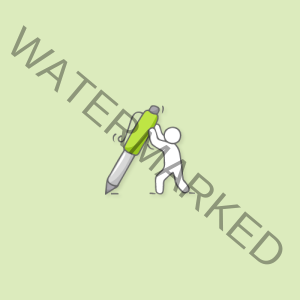WORLDWIDE EMERGENCY CONTACT NUMBERS
Find emergency contact numbers quickly for every country worldwide


In this section, we will focus on tips and guides relating to writing an article.
STRUCTURE
When preparing your article, start by writing all of the various points, angles and areas you want to cover in the form of bullet points, for example:
Once you have listed all of your bullet points, group them by beginning (b), middle (m) and end (e). You can do this by adding the letter alongside each of the points listed.
Often when creating an article, the hardest part is creating a catchy title. The title has to capture the essence of your story and, at the same time, generate interest and intrigue. I will typically create a draft title and edit it throughout the article drafting process.
The title should ideally be meaningful but not too wordy. To ensure your article gets scored and an optimal listing within search engines, it is essential to create it in a specific way. Using Search Engine Optimisation (SEO) compliant titles are crucial. Ideal SEO titles should be descriptive, be more than 40 characters and ideally less than 60 characters. It advisable that you avoid stop words such as a, and, but, so, on, or, the, was, with and that. SEO’s also use a focus or keyword, effectively a single word that describes your article. For example, if your article was about a recent trip to Australia, Australia is your keyword. You must also include the keyword within your title.
An example of an SEO headline would be ‘Gay man’s guide to travelling around Australia’.
TIPS FOR THE TITLE
When starting an article, you first need to decide on the length of the article. If you plan to write a story with around 500 words, you should aim to keep the beginning to approximately 166 words (1/3 of the total article word count).
The purpose of the beginning is to outline the aim of what the article will achieve. The beginning or opening sets the scene and the tone and direction the article will take.
The beginning should be the ‘why’, why was the article was created, and why the reader should continue reading. For example, suppose you were setting the scene for a coming-out story. In that case, you might say something like ‘You are dead to me, words you never want to hear from your family when coming out, discover the techniques I used and how I coped with the rejection. I will also share the practical strategy I adopted, which worked and resulted in the excellent relationship that I now have with my family.’
TIPS FOR THE BEGINNING
Using the same structure as the beginning, you should aim to keep the middle section to 166 words (1/3 of the article). You have explained the purpose and set the scene; now you are into the heart of the story, the key message or point you plan to make.
If this were a story about someone’s life, it is the turning point, if about social injustice, the options or solutions. The middle is the key element within the article, explaining the journey, what is or will be changing. Without the right middle section, your story will lack substance.
TIPS FOR THE MIDDLE
Using the same structure as the beginning and middle, you should aim to keep the ending to 166 words (1/3 of the article). You have set the scene, given the reader all the facts, where to next?
In the ending, you want to summarise the point/position of the article and issue a call to action.
FOR EXAMPLE
That is why members of the LGBTQ+ community are so diverse and fun. Ultimately, we all must continue supporting and loving one another.
In a life story, the ending might summarise the key lessons learnt, what you are doing or are planning next and of course, making the final summary or overall conclusion.
TIPS FOR THE ENDING
Raise awareness about you, the writer
Your biography should summarise your life, experiences, and anything you feel is important to share. Your bio will help the reader by providing them with some context about you, the person who wrote the article.
TIPS FOR YOUR BIOGRAPHY
You can include pictures. photographs or illustrations with your article; however, you need to ensure you have the appropriate copyright and licensing permissions to share. For example, if it is a photograph you have taken, then you own the copyright; however, if you use a picture from the internet, it is typically owned and copyrighted by a site, individual or service. Suppose you use one of your photographs, and it includes friends, family or strangers. In that case, you need to ensure that any person featured is happy for their image to be used.
Websites such as Pixabay (https://pixabay.com) offer royalty-free and attribution free images free of charge.
Quick and easy steps for submitting your article
Excellent, you have written your fantastic article, and you now want to submit it
1 – Log on to your Gayther Care account; if you don’t have an account, click here to register
2 – Under your Gayther account, select ‘Gayther Account‘ and ‘Share with Gayther.’
3 – Fill out all of the required fields
4 – Select the most appropriate category and press the submit button
Gayther Affinity is a private platform for the LGBTQIA+ community and their friends. A space that gives you the freedom to be yourself, helping you communicate with and connect to people similar to yourself from around the world and from all age groups and backgrounds. Get involved with groups discussions, ask questions or quickly search for inclusive business, services, and events near you. Gayther Affinity is committed to safeguarding its users. Through a closed network where user registration is required and enforcing block/report policies and functions to stop online abuse. Signup for your free Affinity account today.
Unfortunately, some articles may be too similar to other articles on the site or fail to meet our minimum standards. Unpublished works do not mean that the article was not of a high standard, just likely it is more around timing. We appreciate that you want to share your stories and sincerely hope you will try again.
No – all of the articles are provided free of charge. By sharing our story, you will be raising awareness about yourself (social media etc.) and at the same time helping to change someone’s views, opinions or even life.
Yes – you can share a link, post to social media and tell your friends and family. We want the world to read your article.
As long as possible – we aim to keep articles on the site for at least two years or more
Yes – if you have a fantastic story but want to remain anonymous, you can.
Naturally, we would want our readers to learn more about you, but we also respect your privacy.
The Frequently Asked Questions (FAQs) have been designed to complement and expand on the Gayther terms and conditions, which you will be required to abide by when creating an account and submitting an article.
If you have any further questions, please contact us
Find emergency contact numbers quickly for every country worldwide
..to our newsletter and never miss a story, offer or event again
